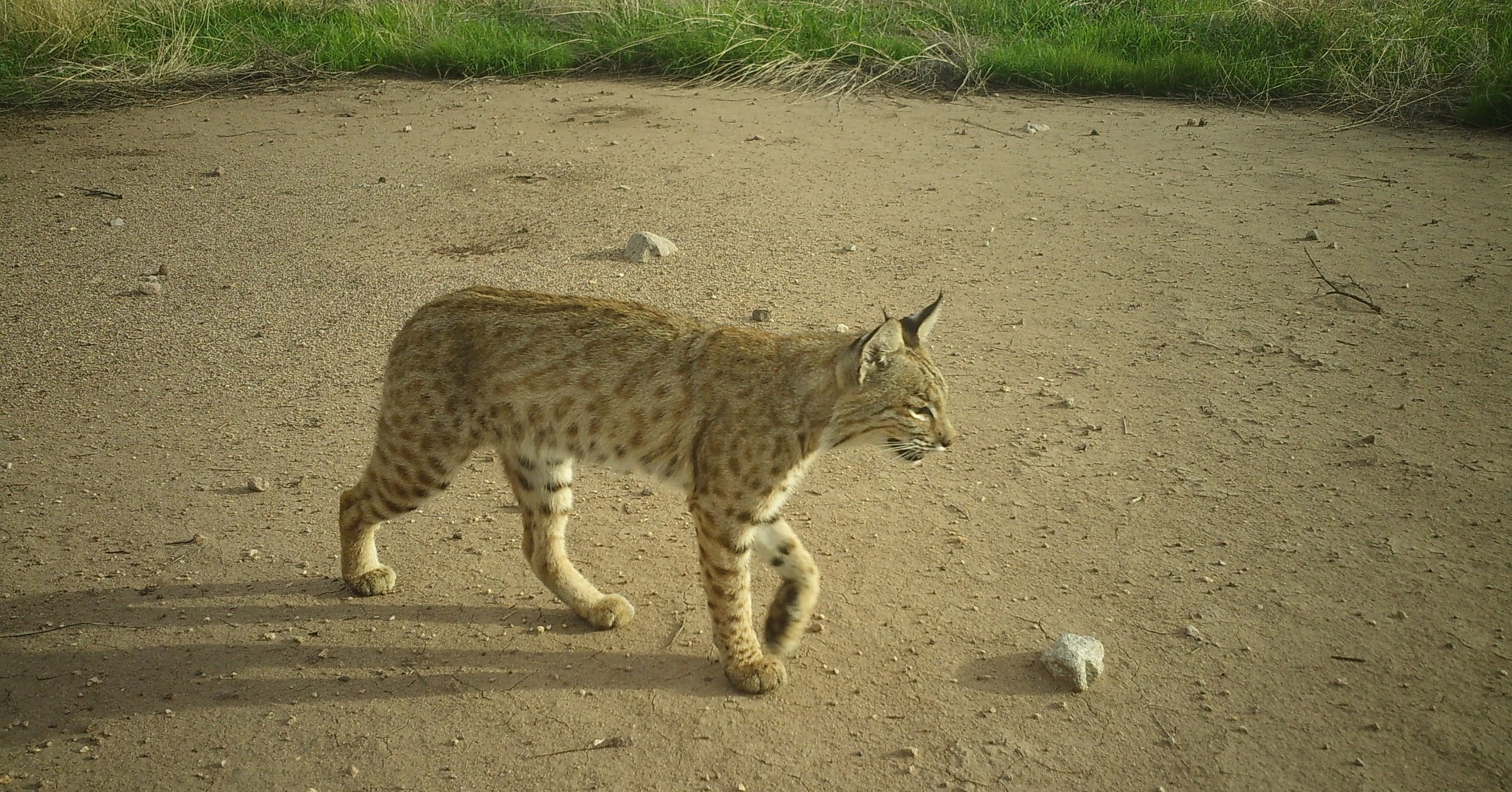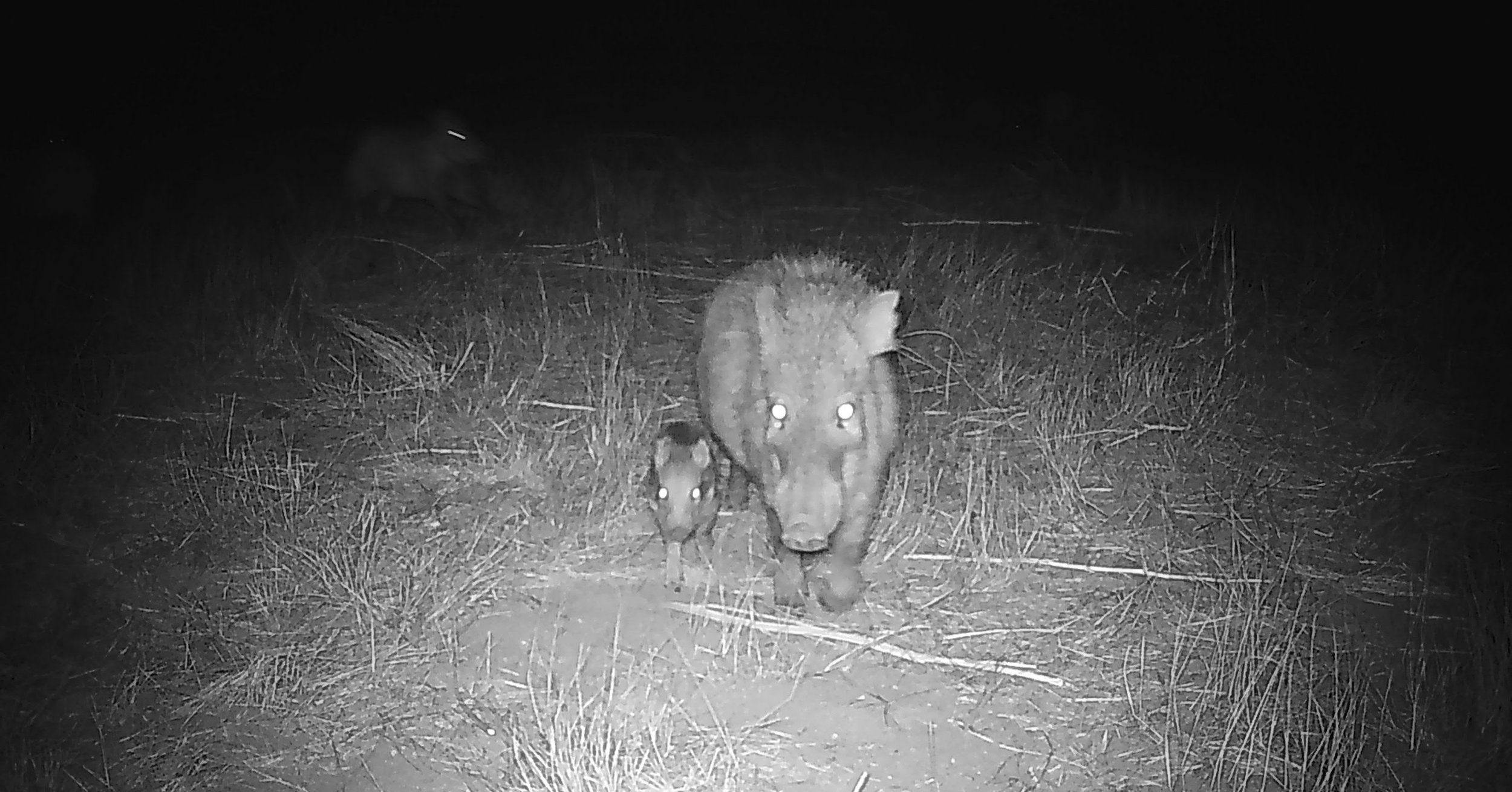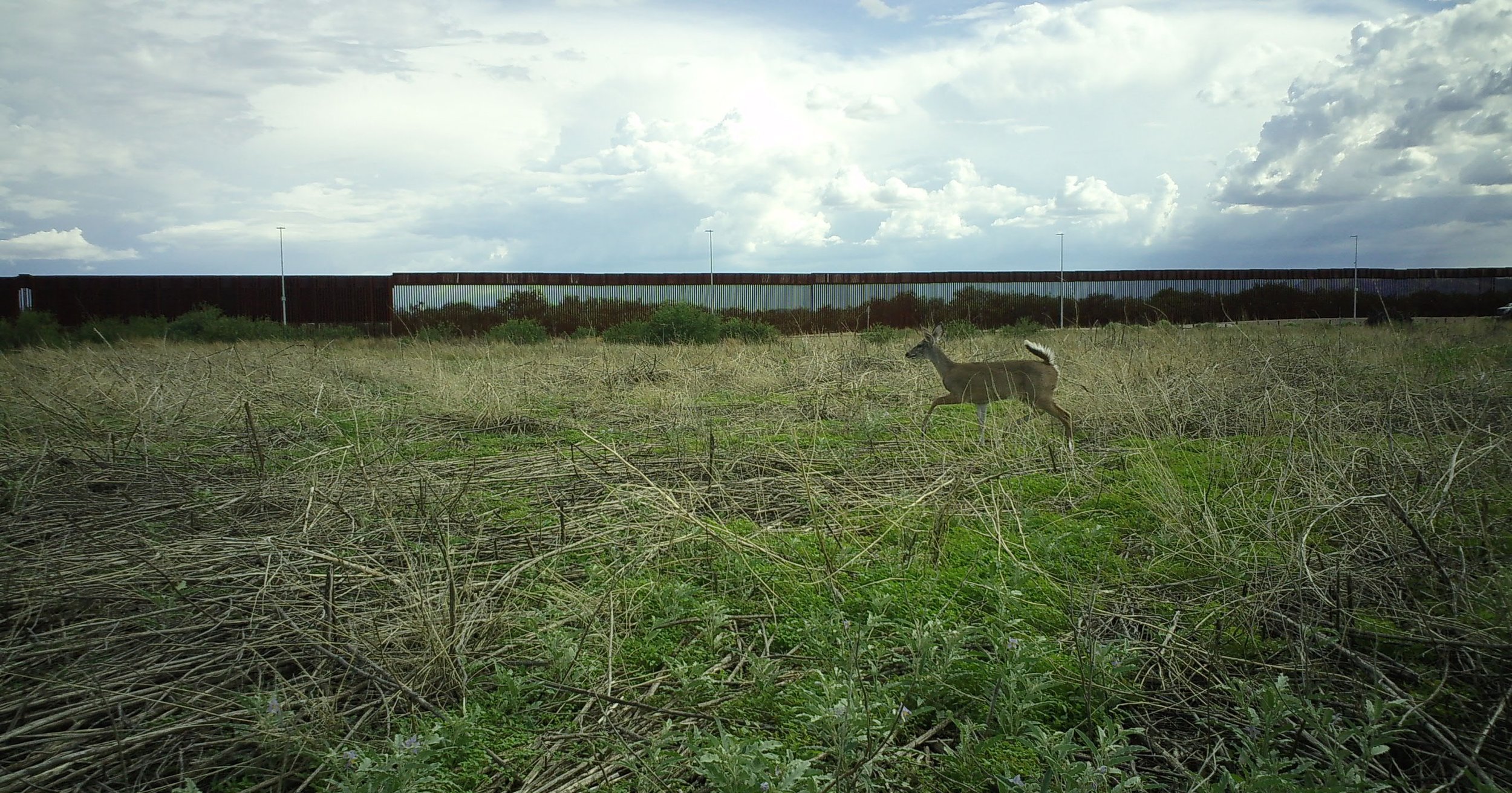Groups Launch Remote Camera Study in San Bernardino National Wildlife Refuge
Wildlife Research Project Will Provide Insights Into Impacts of Border Wall
TUCSON, Ariz. (September 19, 2022) — Two conservation groups, Sky Island Alliance and Wildlands Network, announced Monday an exciting expansion of their work to research wildlife in the U.S.-Mexico borderlands. In June 2022, the groups established an array of remote cameras along two miles of the border wall within southeast Arizona’s San Bernardino National Wildlife Refuge. The project will study the border wall's effects on wildlife movement and other impacts on wildlife behavior.
The San Bernardino Valley has long been an important migration corridor between the Rocky Mountains and the Sierra Madre Occidental. However, the installation of a 30-foot-tall border wall in December 2020 potentially severed this corridor. The barrier is nearly impermeable to large mammals except during certain months, from June to September, when a series of 1.7-meter wide flood gates are open to allow monsoonal floods to flow through large drainages. This study aims to assess whether large mammals can and will cross between Mexico and the U.S. through the open flood gates in the border wall.
View images and videos from the wildlife study available for media use.
In the first month of the study, the project’s cameras recorded more than 48,000 photos and more than 20 mammal species living near the wall. A mountain lion, bobcat, and javelinas were also documented crossing the border through the floodgates. These successful crossings appear to be infrequent, however: Only 9% of wildlife observed near the gates cross through the border wall. More results will be shared as soon as a full data set is established.
"If we learn large mammals can cross the border through open flood gates, we can create wildlife pathways all along the U.S.-Mexico border to help them reach vital food and water," said Eamon Harrity for Sky Island Alliance. "It's a simple policy choice to open these flood gates and help species like mountain lions and black bears find their historic migration routes once again through the wall."
“Because all laws were waived for the rapid construction of the border wall, no environmental reviews were conducted to study its impact on wildlife at the refuge,” said Michael Dax, Western Program Director for Wildlands Network. “Now, with this vital research underway, we can begin to understand how the border wall affects animal populations.”
The study partners intend to keep the cameras monitoring wildlife for a minimum of three years, documenting wildlife movement through the seasons when border wall flood gates are both open and closed.
###
Contacts
Michael Dax, Wildlands Network, (518) 598-3442, michael@wildlandsnetwork.org
Rick Mick, Sky Island Alliance, (520) 624-7080 ext. 83, rick@skyislandalliance.org
Resources
View images and videos from the wildlife study available for media use.
About
Sky Island Alliance is a regional conservation nonprofit dedicated to protecting and restoring the diversity of life and lands in the Sky Island region of the U.S. and Mexico. Sky Islands are mountain ranges primarily in Arizona and Sonora that rise out of arid grasslands and desert seas and provide vibrant habitat for plants and wildlife.
Since 1991, Wildlands Network has been committed to reconnecting, restoring and rewilding North America for the benefit of all species. Our work is grounded in science, driven by fieldwork and furthered through strategic policy and partnerships.





